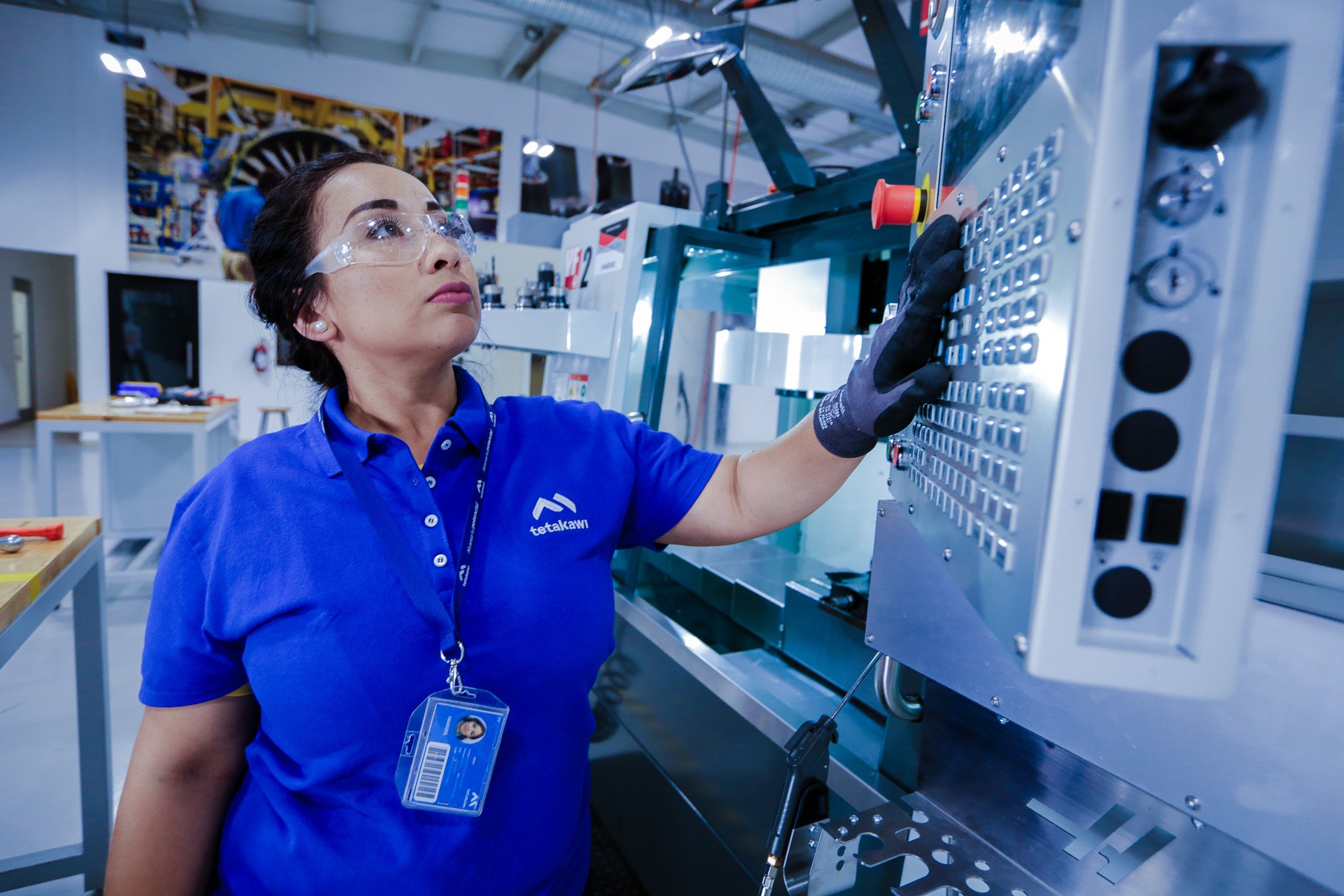Mexico boasts a robust advantage in addressing global manufacturing labor shortages due to its skilled manufacturing workforce. With approximately 66% of its population actively engaged in the economy, Mexico offers a stable demographic base that foreign companies find attractive for their manufacturing needs.
Beyond lower labor costs, Mexico's workforce is recognized for its high skill levels, cultivated through extensive investments in training facilities by both the federal government and industry associations. This investment not only enhances the capabilities of local workers but also ensures they are well-prepared to meet the demands of modern manufacturing practices.
As a result, Mexico stands out as a reliable solution for companies seeking to bolster their manufacturing operations amidst global labor challenges.
How bad is the manufacturing labor shortage?
The dire manufacturing labor shortage continues to get worse. Labor shortages could cost the U.S. economy up to $1 trillion by 2030 and threaten to destroy Germany's public pension system. Pressure to raise pay for U.K. workers is threatening to hurt British companies' competitiveness. By 2025, China will have a shortage of nearly 30 million workers in its manufacturing sector.
Germany presents one example of the impact countries face by not addressing the manufacturing labor shortage. After decades of low birth rates and uneven migration, the German Economic Institute estimates that the country's labor force will shrink by more than 300,000 people in 2022 as more older workers retire than younger ones enter the workforce. By 2029, this gap is expected to widen to more than 650,000, leaving a shortage of people of roughly 5 million workers by 2030.
"The shortage of skilled workers has become so serious by now that it is dramatically slowing down our economy," commented Christian Duerr, parliamentary leader of the co-governing Free Democrats (FDP), according to Reuters. "We have to reach the mark of 400,000 skilled workers from abroad as quickly as possible."
For many manufacturers, the opposite solution may be more impactful. By diversifying the operational footprint to include a home country headquarters with global manufacturing locations, companies may better find the talent they need. This approach also provides greater stability in the event that one location faces labor shortages or other challenges. Moreover, many companies find that their home operations profit from this approach. By sourcing manufacturing labor in countries where it is available, companies can use profits to fuel R&D efforts, administrative work, and other activities in their headquarter locations.
Why is there a labor shortage in manufacturing?
There are many factors driving the labor shortages in manufacturing, including the demand for unique skill sets ranging from welding to machinery operation. Many countries find that manufacturing suffers from an image problem. A poll by The Manufacturer found that fewer than 20% of U.K. parents agreed they would encourage their children to work in manufacturing. Poll respondents reported viewing the sector as one providing low wages and poor benefits, despite clear evidence to the contrary. China faces a similar problem, where long-held perceptions that blue-collar jobs are inferior are pushing more of the workforce into civil service jobs.
In addition, wage growth in manufacturing appears to have stagnated in the manufacturing labor market. As Deloitte notes in a 2021 report on global labor shortages, U.K. vacancies in manufacturing are higher than they were before the pandemic. Still, wage growth averaged just 1.8% over the last two years, considerably lower than the growth seen prior to the pandemic. Canada's manufacturing wage growth was also weak, despite strong growth in vacancies. Increasing wages, however, creates a risk to companies' competitiveness in the global market.
The "Great Resignation" triggered by the COVID-19 pandemic has worsened this problem. Workers are quitting in record numbers in search of more satisfying jobs. In the U.S., manufacturing quit rates increased by 78% between February 2020 and November 2021, according to research from the Indeed Hiring Lab.
Mexico's skilled manufacturing workforce
Mexico offers a stable solution to this labor challenge. In fact, the most significant reason foreign companies are attracted to Mexico is the labor advantages it offers. Countries looking for stable demographics to feed manufacturing labor needs find that Mexico's workforce offers this desired stability. Sixty-six percent of Mexico's population of approximately 128 million is economically active, and this is projected to continue to increase through 2060 before trends become more stable.
While Mexico does offer lower labor costs compared to the more developed nations facing manufacturing labor shortages, it also offers high levels of skill. Manufacturing is a core part of Mexico's economy. Throughout a long history in manufacturing, the country has established a strong infrastructure to support this sector. Mexico's federal government and several state governments, together with industry associations and large manufacturing employers, have made significant investments in training facilities at both the university and vocational levels. This investment helps connect the local workforce with employment opportunities.
Other reasons foreign companies are attracted to Mexico
Foreign companies are attracted to Mexico for many other reasons, of which comparatively lower labor rates are one. However, this cost advantage, which helps manufacturers position themselves to better compete in the global market, is just the beginning.
Mexico's economy depends upon its manufacturing strength, and the federal government has put a number of policies in place to create an attractive environment for foreign direct investment. For example, Mexico is a partner in 14 free trade agreements with more than 50 countries, providing it access to more than 60% of the world's gross domestic product. These agreements make Mexico one of the most open and competitive markets in the world. Foreign direct investors in Mexico find it easy to import and export goods with partner suppliers and consumers worldwide. For many countries, Mexico also provides a low-cost entry into the nearby U.S. market, the largest consumer market in the world, due to proximity that reduces shipping costs and cost savings for North American manufacturing afforded by USMCA.
Many states in Mexico have likewise put incentives in place to encourage foreign direct investment in Mexico. Working with a partner experienced in site selection can help manufacturers identify locations that provide the most impactful cost-benefit for their needs.
To learn more about how Mexico's stable workforce can support your manufacturing needs, contact Tetakawi today.
Subscribe
Sign up and stay informed with tips, updates, and best practices for manufacturing in Mexico.






